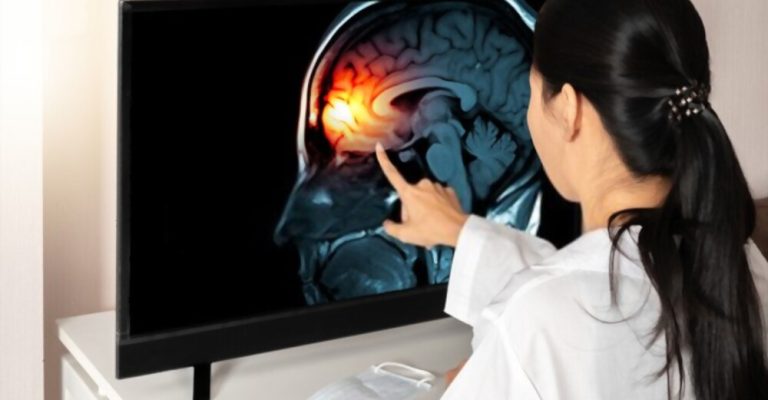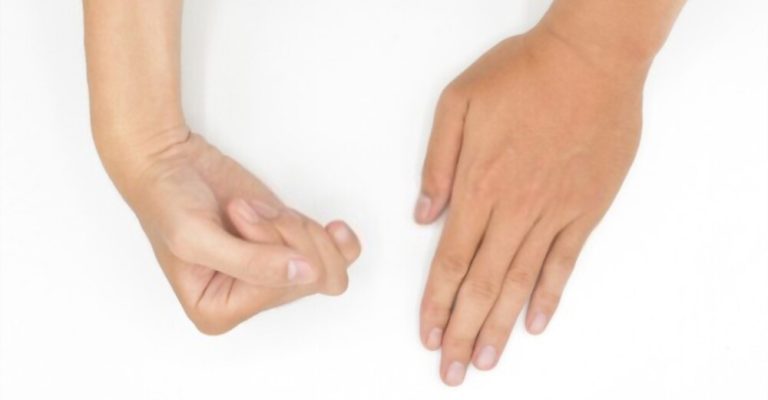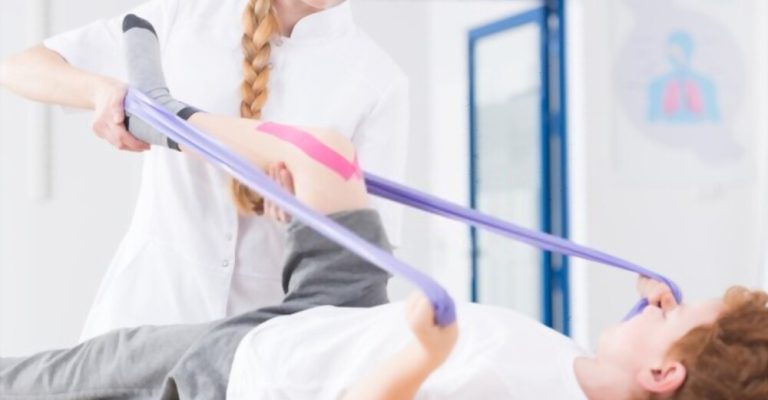
If you or a loved one have recently been affected by an illness or injury that results in posturing—when the body takes on an unusual position due to lack of muscle control—then you may be searching for answers. Posturing is commonly associated with neurologic disorders, such as brain injuries, and can take many forms, from physical rigidity to uncontrolled limb movements.
Understanding these postures and finding insight into their recovery outlook is vital when providing care and support following a brain injury. In this blog post, we’ll explore the various types of posture after a brain injury and discuss what potential treatments and recovery strategies exist so that you can get back on your feet again.
After suffering a severe TBI, a person may display either decorticate or decerebrate posture. Although each posing style has some hallmarks, its manifestation varies from person to person. It’s possible, for instance, that some people only exhibit atypical posture on one side of the body. Conversely, both posture forms may co-occur in different parts of the body. Those who survive a severe brain injury may exhibit atypical posture for many days or weeks after the damage has healed.
Disruption to the brainstem is commonly involved in both kinds of posturing, although it may also be caused by injury to other brain areas. Listed below, we’ll talk about what sets these two postures apart.
This posture is characterized by a flexed (bent) arm and leg on the same side of the body, while the arm and opposite are either extended (stretched out or slightly bent. The individual’s head may also be tilted to one side. It is commonly seen in people suffering from severe brain injuries, strokes, and other disorders involving the brainstem.
Decorticate posture is often linked with higher success rates than decerebrate posing, which is more common. In contrast to decerebrate posturing, this posture usually only affects one side of the body. Aberrant flexion, decorticate stiffness, flexor posturing, and the decorticate reaction are all names for the same thing. The hallmarks of such a posture are:
Decorticate posture is often linked to higher successful recovery rates than decerebrate posing. A person can recover, albeit partially or with varying levels of impairment. Often, this is the first kind of posturing witnessed by medical personnel when a person has suffered a severe brain injury.
On the other hand, decerebrate posturing is less likely to be conducive to recovery than decorticate posing. Symptoms of decerebrate posture are brought on by dysfunction in the midbrain, pons, or diencephalon. Decerebrate posture is the more prevalent of the two forms of aberrant posing that may develop after a TBI. Additionally known as unusual extension, decerebrate stiffness, extensor posturing, and decerebrate reaction.
Studies say that those with a decerebrate posture have less than a 10 percent chance of full recovery. At the same time, those who display decorticate posturing may have up to a 40 percent chance of making a full recovery.
This types of posture often involve:

It is crucial for medical professionals to accurately diagnose the posture of a person who has suffered a brain injury. This can help them determine how extensive the injury is and the best course of treatment. X-rays, CT scans, and MRI scans are all used to diagnose the posture of a brain injury patient. It is also possible for an expert to diagnose posturing by physically examining the arms and legs. Abnormally postured patients often appear in a vegetative state of unconsciousness.
The patient will be asked to lay face up, with their arms at their sides, while the doctor does the procedure. Once the doctor has administered the stimulation, they will watch for any signs of motion. The abnormal posture of the trunk and limbs usually happens in reaction to a stimulus-like pain, although it may also happen on its own.
People often shield their faces with their hands or shift their position in response to discomfort. One distinguishing feature of decerebrate posture is that the affected person’s arm will extend in response to a stimulus provided anywhere on the body. Decorticate posture is characterized by a gradual bend in the elbows and a typical retreat from the region where the stimulus is delivered during an examination.
The prognosis of abnormal posturing after head injury varies depending on the severity and extent of the brain damage. For example, suppose a person has suffered an ischemic stroke and displays decorticate posturing. In that case, they may be more likely to eventually regain some degree of motor functioning and have a better outcome. On the other hand, if a person displays decerebrate posturing after a traumatic brain injury, their effect is likely to be more severe regarding their motor functioning.
The critical thing to remember is that even if a person displays abnormal posturing, it does not necessarily mean they will never regain some degree of motor functioning. With proper and aggressive treatment, those with decorticate or decerebrate posturing can and do make significant progress in their recovery. It is essential for medical professionals to accurately diagnose the posturing of their patients in order to provide them with the most effective treatment possible.
Any patient’s recovery depends on receiving appropriate medical attention, as well as a strong support system and plenty of encouragement from family and friends.
Note that while there are no guarantees of recovery, those who display abnormal posturing have the potential to make significant progress in their rehabilitation. With proper care and a positive attitude, patients with decerebrate or decorticate posturing can make substantial strides in their recovery.

Once the postural diagnosis is made, a plan of action should be developed to help the patient regain their motor capabilities. This will involve physical therapy, occupational therapy, and medical intervention. The goals of treatment should be to improve flexibility, range of motion, and strength, as well as to promote balance and coordination.
Physical therapists will focus on exercises such as upper body exercises and balance drills to improve the patient’s postural control. They may also use electrical stimulation, heat therapy, and massage to help relax the muscles involved in posturing. Physical therapy can also help to reduce spasticity, improve muscle control, and increase strength.
In addition, it is proven that physical therapy can improve a patient’s quality of life and help them regain some motor functioning. For example, a patient may recover the ability to sit up, walk, climb stairs, and even use their hands for everyday tasks. Brain injury patients should also be encouraged to practice daily stretching, which can help improve flexibility and reduce the risk of muscle contractures.
Occupational therapists are focused on helping the patient improve functional skills and regain independence with daily tasks. They focus on activities of daily living, such as dressing, bathing, and grooming. They also evaluate the patient’s abilities to perform everyday tasks in order to determine the best strategies for helping them regain normal function.
They may use adaptive techniques, such as modified utensils or specially designed devices for dressing, to increase the patient’s independence. In the case of a person with a decerebrate posture where the patient is in extended limbs, he can eat with a bent-arm eating technique.
People with abnormal postures need medical help immediately for the best possible results. Each individual with a brain injury will need individualized care. While bringing a comatose patient back to consciousness is impossible, prompt medical attention may lessen the severity of their injuries and other problems. After the patient’s condition has stabilized, physicians may do diagnostic tests to determine what caused the brain injury and how best to manage it.
The outlook for a patient with decerebrate or decorticate posturing will depend on the injury’s extent and the treatment provided. With a combination of physical therapy, occupational therapy, and medical intervention, patients can regain control over their posture and make progress toward recovery. The key to successful treatment is a positive attitude and strong support from family and friends. With the proper care and dedication, patients with decerebrate or decorticate posturing can make significant strides in their rehabilitation.